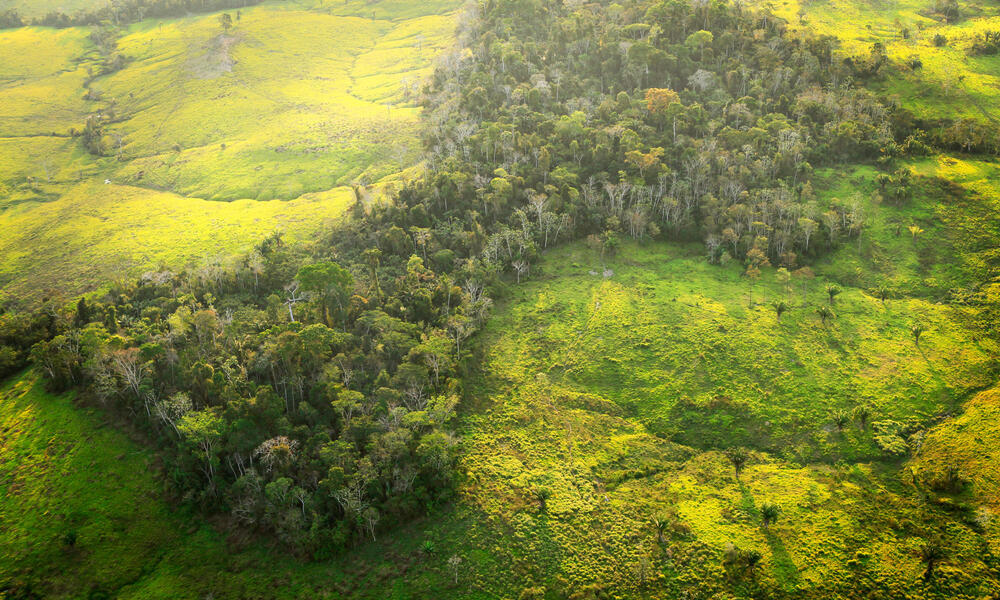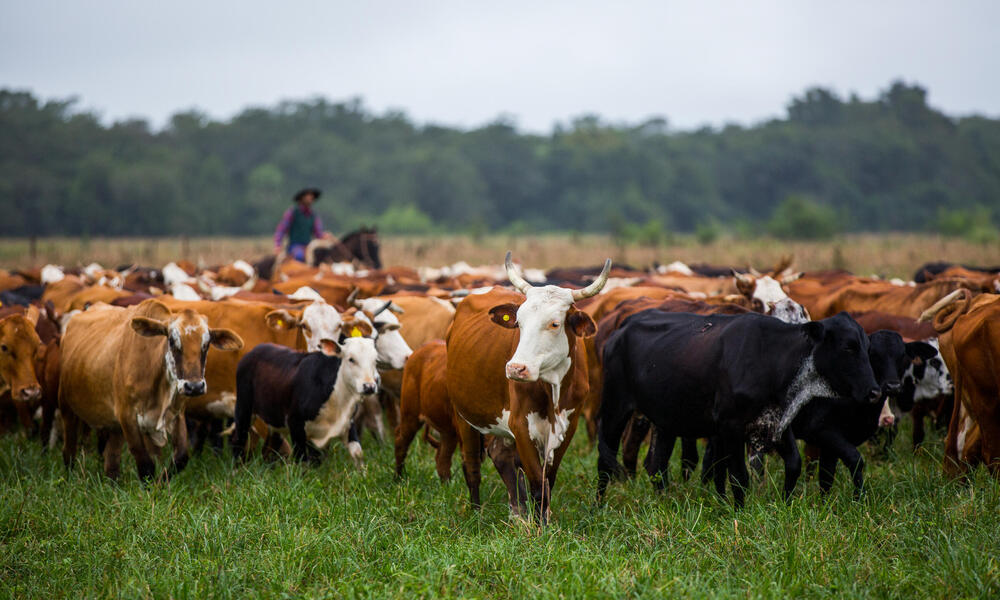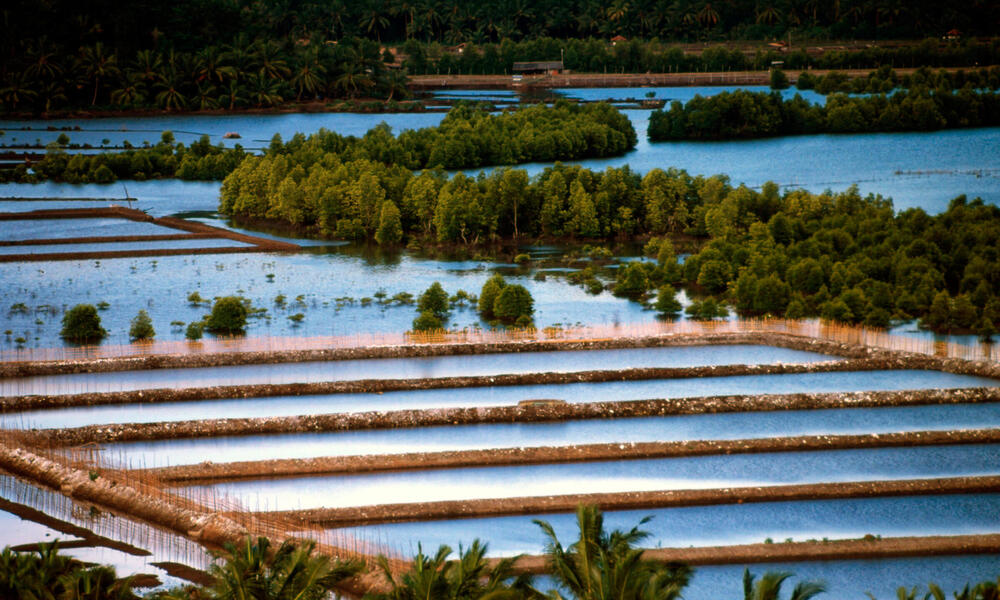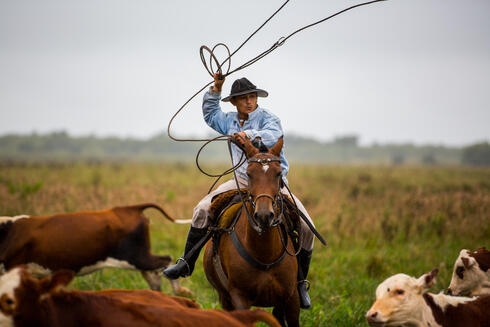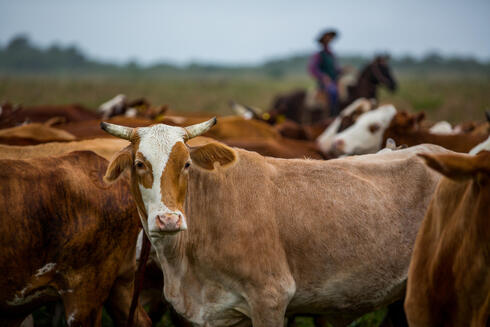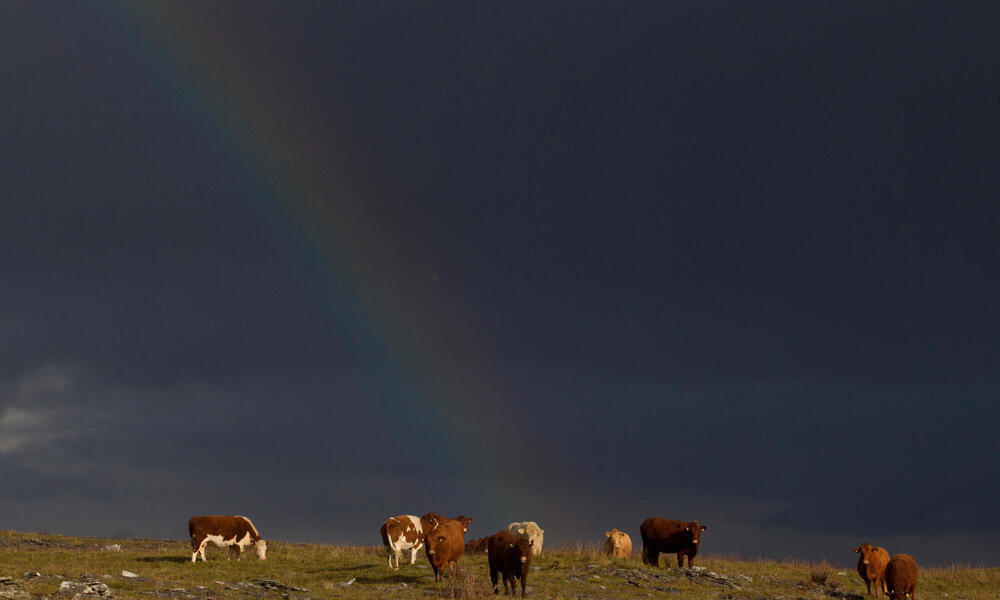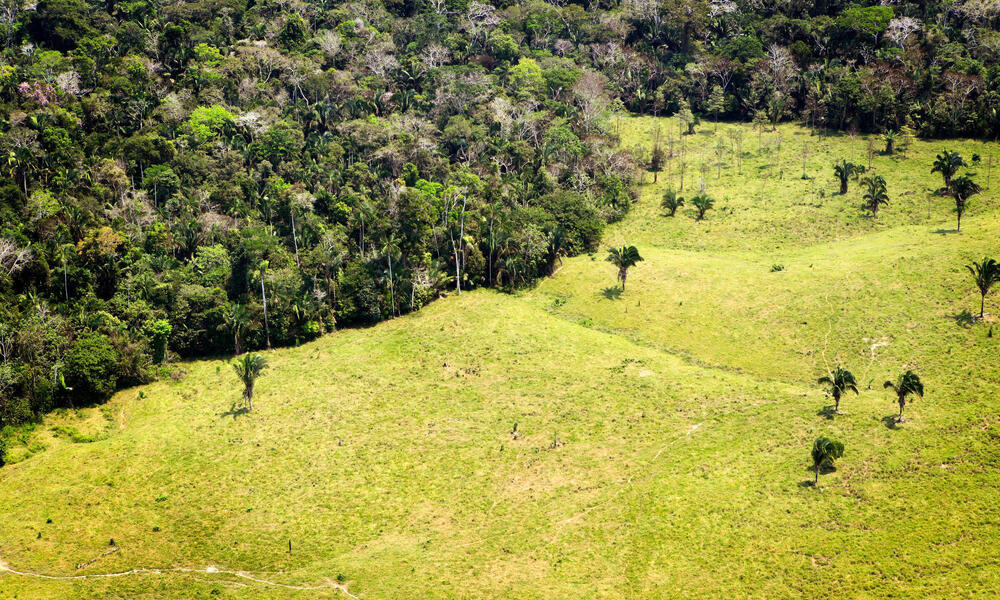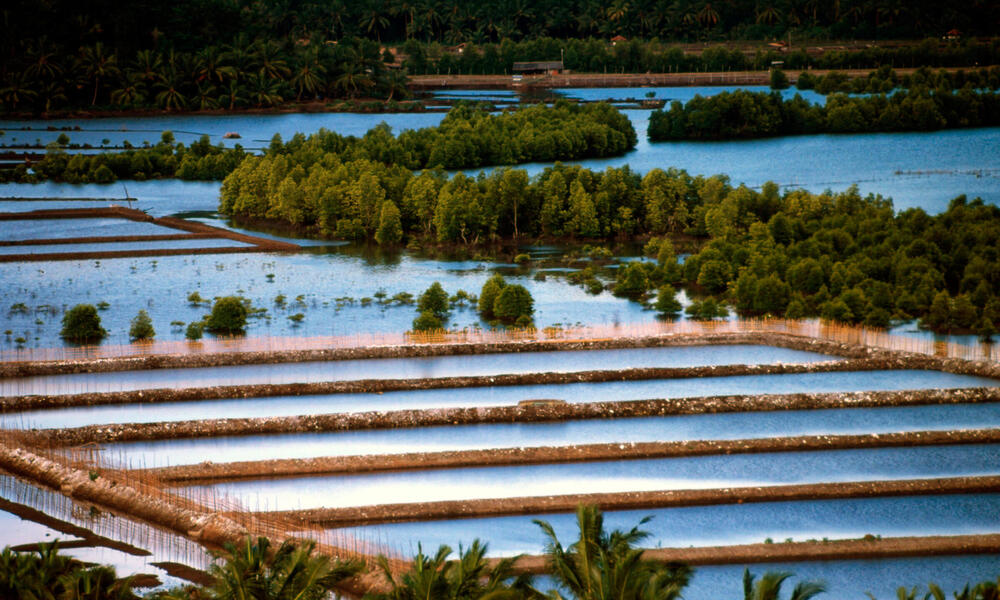Between 1970 and 2014, global populations of mammals, reptiles, amphibians, fish, and birds declined by 60%. One major reason: where and how we produce food.
The loss of wildlife is driven most directly by the loss and degradation of their habitats—such as clearing forests, grasslands, and wetlands to make room for pastures, cropland, and fish farms.
The production of meat, poultry, dairy, and seafood contributes significantly to habitat loss as well as greenhouse gas emissions and water use. This is because it doesn’t just take resources to raise the animals themselves but also to produce their feed.
At the same time, some livestock and feed production practices—such as well-managed grazing of cattle on grasslands and the use of cover crops to build soil health—can help mitigate environmental impacts and improve yields. While sustainable practices can vary by geography and production system, we encourage an outcome-based approach to food production that:
- Preserves natural habitats and diverse wildlife;
- Reduces the use of land, water, energy, and other natural resources; and
- Limits waste, water pollution, soil erosion, and greenhouse gas emissions.
WWF works globally with food producers, traders, processors, brands, retailers, restaurants, trade associations, financial institutions, foundations, and governments to shift sourcing, financing, and policies to support more sustainable food systems—from cattle to chickens to farm-raised salmon. Together, we’re examining what sustainable solutions are possible, what works and what doesn’t, which tools are critical to improve animal protein production globally, and what it all costs, recognizing that it is critical to balance environmental, social, and economic concerns.
Our goal for 2030 is to reduce the key impacts of animal protein by 50% per gram of protein in the US and by 20% globally.
